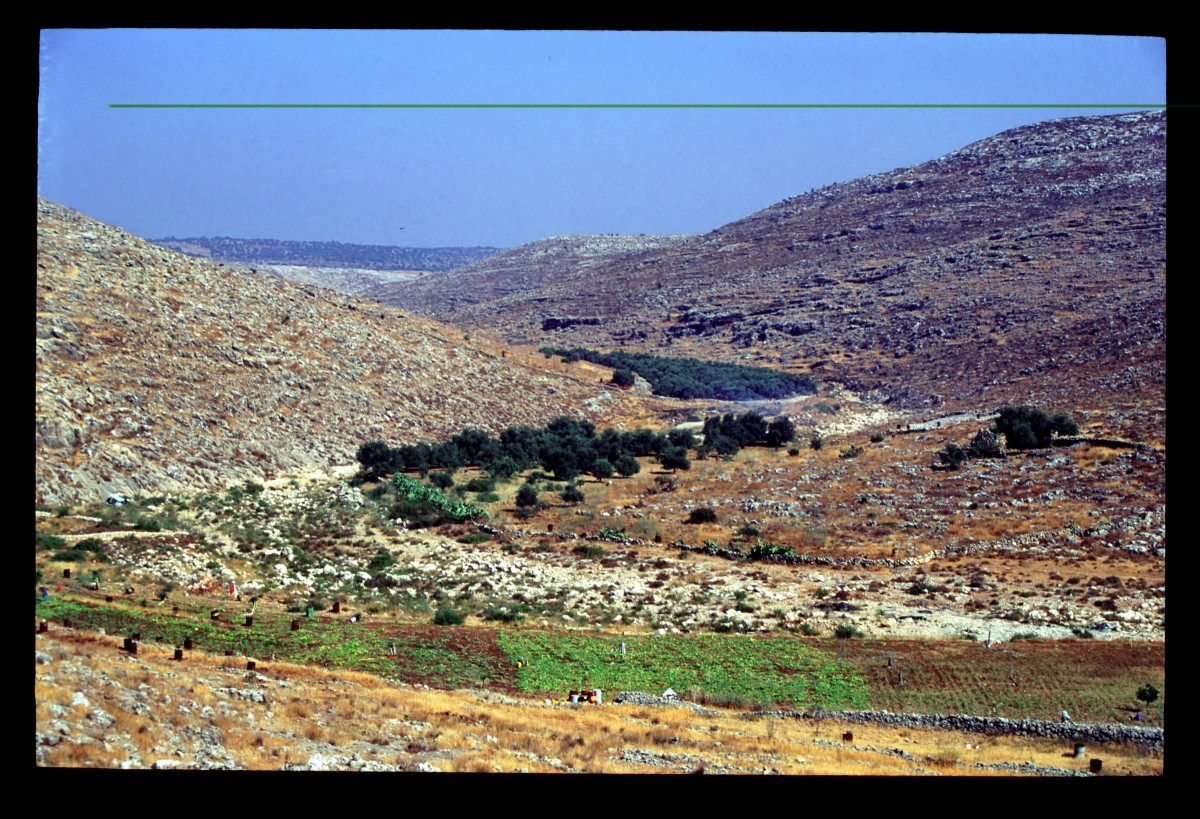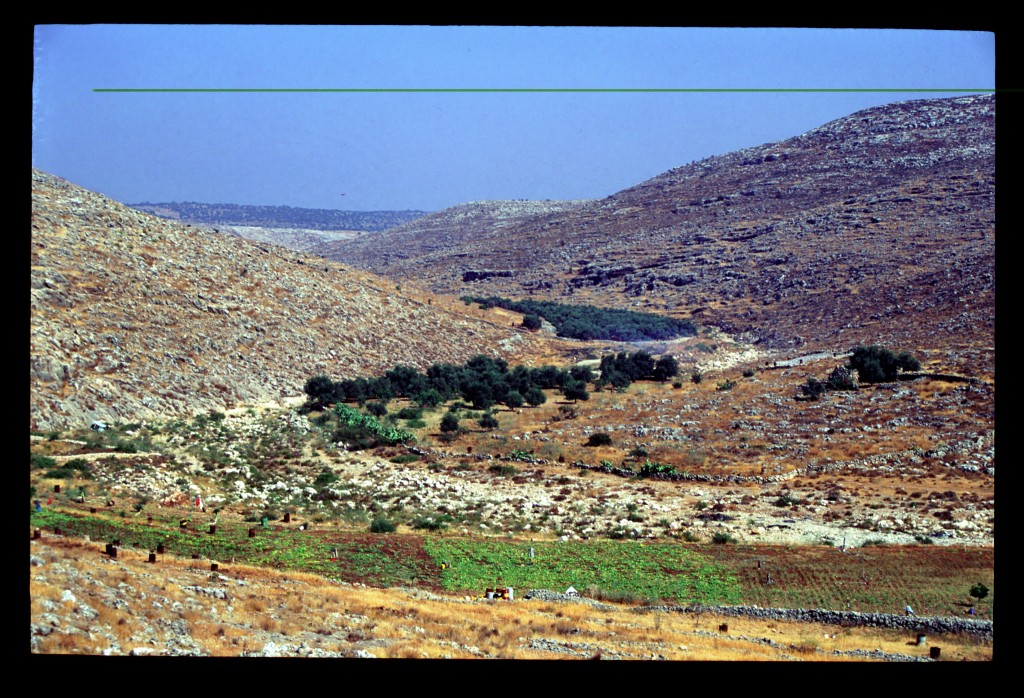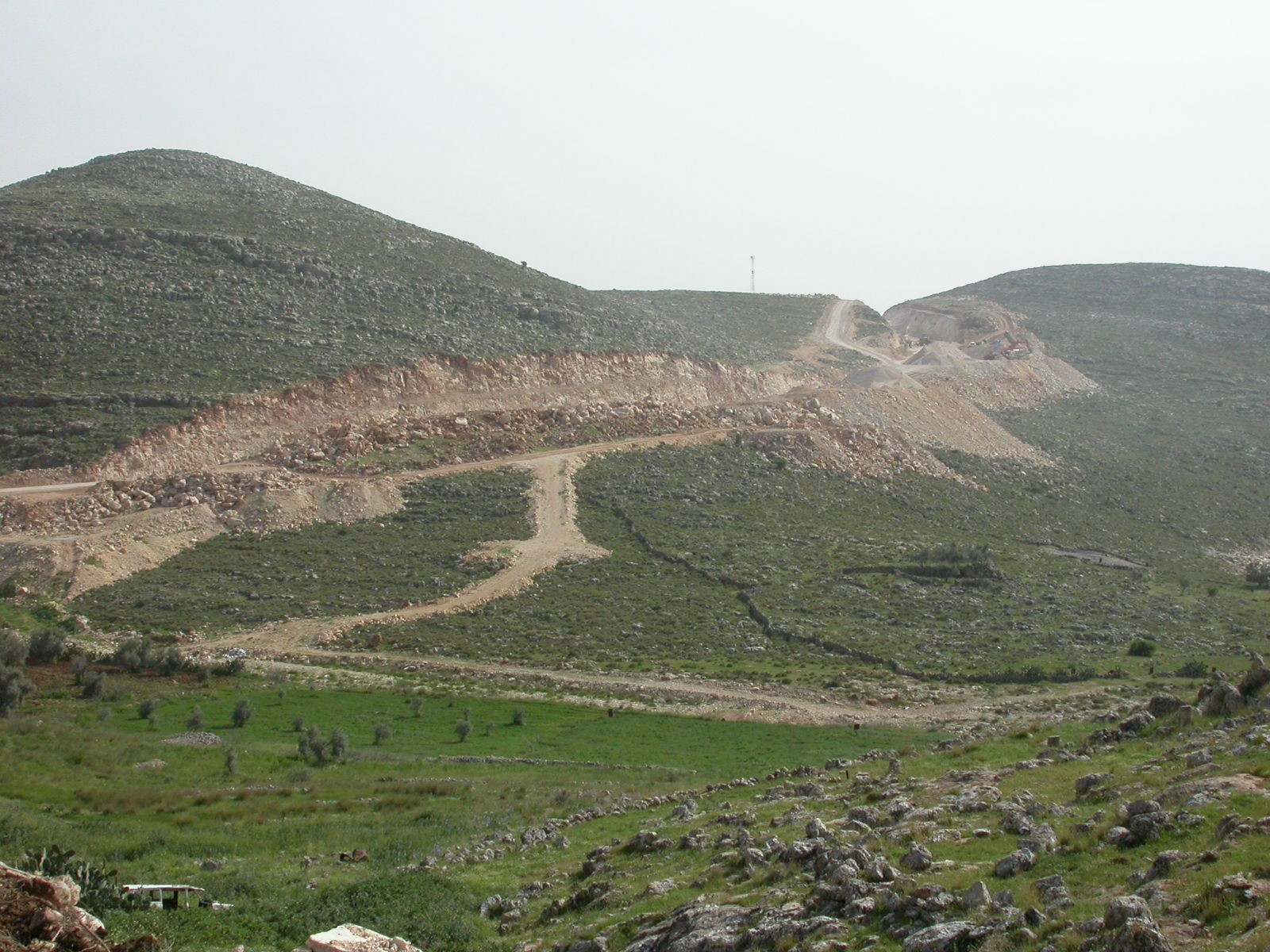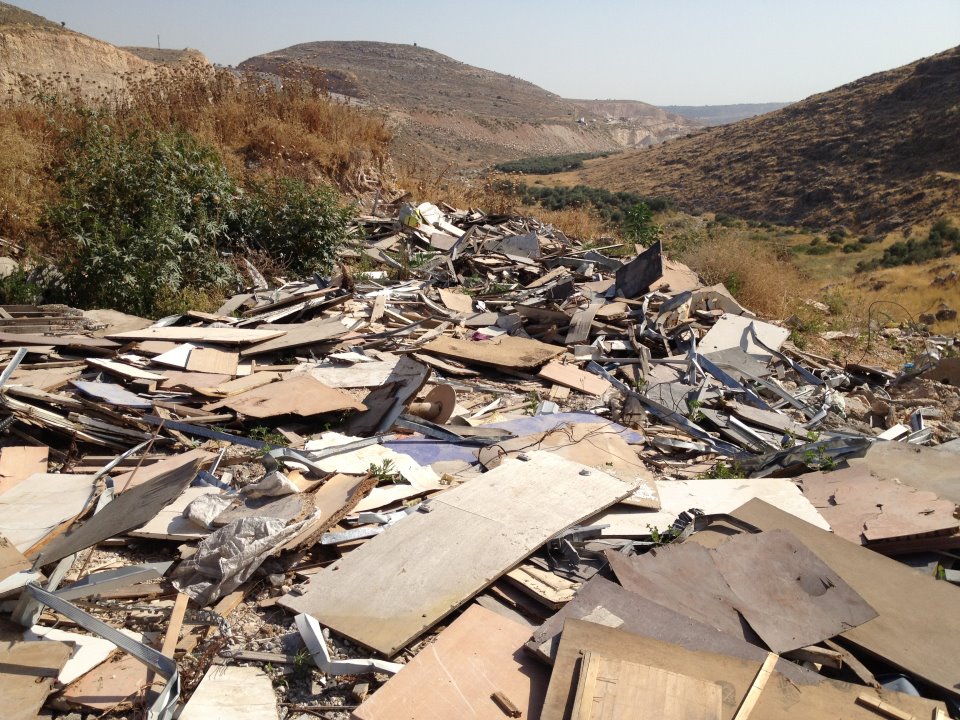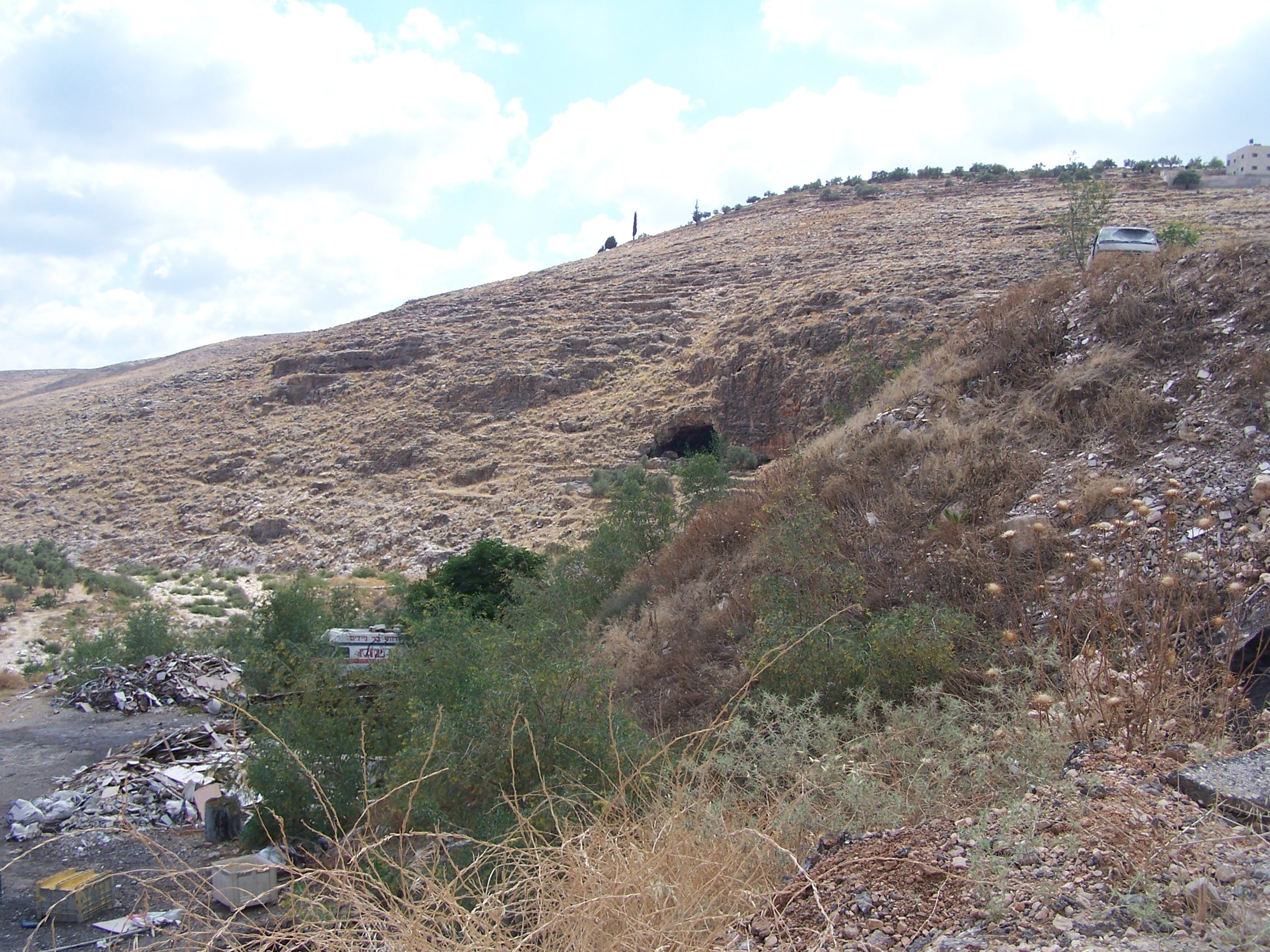Brian Boyd: In June 2012, with a small group of Palestinian colleagues, I entered the Wadi en-Natuf in Palestine for the first time since 2000. In June 2000, it looked like this:
Since 2000, I have been involved in an archaeological project centered in and around the small (population 4,500) Palestinian town of Shuqba in the West Bank (Ramallah and Al-Bireh district). Shuqba gives its name to a large cave in the nearby Wadi en-Natuf, a river valley that runs close to the town. This cave was excavated by the British archaeologist Dorothy Garrod in 1928, during the turbulent early years of the British Mandate. Garrod is a central figure for women’s involvement in the history and practice of archaeology. At Shuqba she worked with a team composed primarily of young Palestinian women from the local area, a choice that was unusual for both the date and the region. Garrod subsequently became the first woman professor at the University of Cambridge (1939–1952) and was instrumental in securing admission for women students to the university in 1948. Her pioneering archaeological fieldwork at Shuqba laid the foundations for the prehistory of the entire Levant region and left a complex series of scientific research questions into what has become known in the (still lingering) old cultural-historical archaeological terminology as the “Natufian culture” (ca. 10 to 13 thousand years ago), named after the Wadi en-Natuf at Shuqba. This is when and where archaeologists have traditionally located the earliest origins of agriculture, sedentism, and subsequent plant and animal domestication, as well as the very beginnings of those profound environmental and ecological changes wrought by human occupation, now referred to as the Anthropocene.
After Garrod left Palestine in 1928, no further archaeological work was carried out at Shuqba until 2000, when Zoe Crossland (now in the Anthropology Department at Columbia University) and I undertook preliminary investigations in the cave and its wadi with a view to renewed fieldwork and the testing of some of Garrod’s key research propositions using modern techniques (Boyd and Crossland 2000). The Second Intifada (from 2000) resulted in further delays, until new fieldwork finally began in 2012 in collaboration with Professor Hamed Salem and a small team of undergraduate and graduate students from Birzeit University, the largest university in the Palestinian territories. I emphasize this point because in 2012 I was asked by security, on leaving Israel’s Ben Gurion Airport, “Are there universities in the West Bank?”
In June 2012, then, I went back there to resume work. I had been warned by colleagues in Palestine that the Wadi en-Natuf had been undergoing changes. It now looked like this:
What you see here is the construction of a road between Ramallah and Tel Aviv, running past Shuqba and encroaching on the Wadi en-Natuf and neighboring villages. I presented this picture at a conference of archaeologists who work in the region, in Paris in 2010. I was told that I shouldn’t have shown that picture. It wasn’t a “very nice” thing to have shown, apparently.
Aside from the archaeological investigations of the cave and wadi, our ongoing project, Columbia/Birzeit, focuses on the establishment of a small community anthropology/archaeology museum in Shuqba and at Birzeit University. UNESCO tells us that for this to work, the town needs tourism.
Back to June 2012: I had been warned, but I was still taken aback. The Wadi en-Natuf looked like this:
Sophia Stamatopoulou-Robbins: Major waste-related problems have plagued the village for well over a decade: Israeli industrial dumping, the burning of X-ray images for silver extraction from Ramallah-area hospitals, and the spillage of raw sewage into Shuqba village lands. Israelis from both sides of the Green Line have been dumping municipal and industrial wastes on Shuqba’s lands for more than a decade. A small number of local landowners have been accepting fees from truck drivers to allow dumping on their lands. Residents set fire to the dumps to shrink them. When they did, they reported that the dumps sometimes burned for three or four months on end, even when it rained. There was a strong feeling in the village that this burning—and the toxic materials that burned—were among the causes of lung and reproductive problems from which people had been suffering in Shuqba.
In addition, four or five Palestinian landowners from Shuqba were allowing dumping in exchange for about 200 NIS (about $50) per truckload.
You don’t expect this when you are putting together a fairly straightforward archaeological project in a rural community. Where does this leave our initial research questions into ecological/environmental change some ten thousand years ago? And as for tourism; tourists barely visit East Jerusalem and the West Bank these days. Shuqba is certainly not on their bucket list. So, our endeavors will remain at the level of local community—school, college, and university—for now. The Birzeit students and faculty, as well as the local community in Shuqba, are keen to engage with projects such as this, projects with potential for educational development, oral histories, material histories of land and landscape, and forward-looking cultural heritage initiatives. We’ll keep you posted.
Brian Boyd teaches archaeology in the Department of Anthropology at Columbia University.
Hamed Salem is Chair of History and Archaeology at Birzeit University, Palestine.
Sophia Stamatoupoulou-Robbins is Assistant Professor of Anthropology at Bard College.
All photos in this post are credited to Brian Boyd.
Reference
Boyd, Brian, and Zoe Crossland. 2000. “New Fieldwork at Shuqba Cave and in Wadi en-Natuf, Western Judaea.” Antiquity 74, no. 286: 575–576.
Cite as: Boyd, Brian, Hamed Salem, and Sophia Stamatoupoulou-Robbins. 2015. “Toxic Ecologies of Occupation.” EnviroSociety. 4 April. www.envirosociety.org/2015/04/toxic-ecologies-of-occupation.
